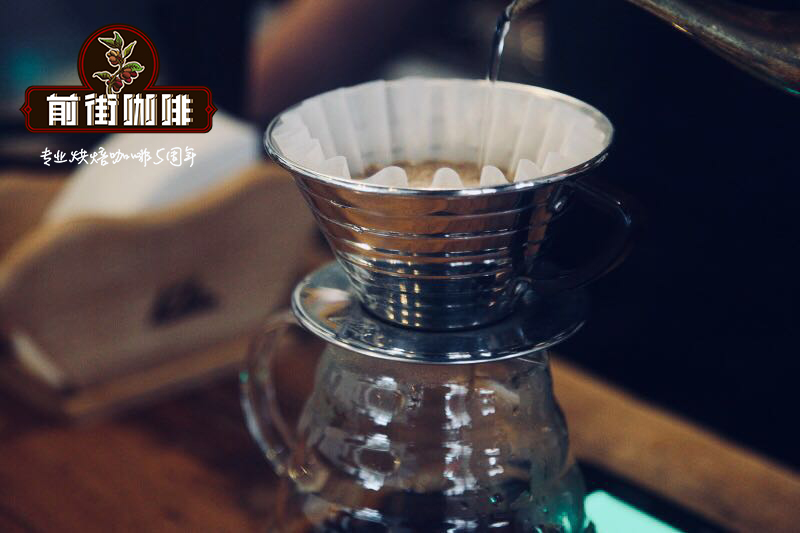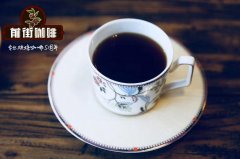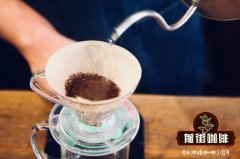Colombia Canas special selection washed coffee how to hand_hand washed Canas coffee how to do good drink

Professional coffee knowledge exchange more coffee bean information please follow the coffee workshop (Wechat official account cafe_style)
Colombian coffee beans
Our newest single-source coffee bean is a washed Katula growing in the agricultural area of Santa Fe Antioquia province. The beans, which grow at an altitude of about 1,700-2,100 meters above sea level, are processed by thorough cleaning and then dried in the sun.
Katula is a natural mutation of the bourbon variety, originally found in Catula, Brazil. It grows at higher elevations and produces greater yields, due to the fact that it is short with a thick core, and a large number of secondary branches. Another reason for its high yield is that this kind of tree is naturally resistant to disease. The area with higher altitude has better production quality, but the production speed is lower. The quality of Katula increases with the increase of altitude, but the yield can be reduced.
Colombian coffee has a reputation for being generally mild, but complex and well-balanced. This washed capra works well in any brewing method, except for larger milk drinks-a flavor that may be lost in large amounts of milk.
Tasting Note: Colombia is characterized by medium body and shallow lime acidity, with mellow notes of chocolate, nougat and vanilla, supplemented by sour fruits such as raspberries and apples, and finished clean.
Colombia Coffee Growing Region Colombia Coffee Harvest Colombia, Coffee Cherry Blossom
Antioquia, Sundafid-Colombia
The province of Antioquia, Santa Fe, is located in the Cauca River Basin of Antioquia, Colombia. The area has a humid tropical climate-ideal for growing coffee and enabling farmers to adopt more sustainable practices.
Most of Antioquia is part of the Paisa region of Colombia, which was declared a World Heritage site by UNESCO in 2011 and is known as the "Coffee Cultural Landscape".
Most Colombian coffee is handled by the Colombian National Federation of Coffee growers, which was established in 1927 as a commercial cooperative to promote coffee production and export in Colombia and today represents farms owned by more than 500,000 producers and small families. The goals of the Federation include protecting the industry, assessing and resolving industry problems, and promoting the interests of Colombia through the coffee industry.
One of the current problems facing the Colombian coffee industry is regional climate change associated with global warming, which has led to a drop in Colombian coffee production from the standard measure of 1,2 million 132lb bags to 9 million 2010 since 2006. Between 1980 and 2010, the average temperature rose by 1 °c, and the average precipitation increased by 25% over the past few years, undermining the specific climate requirements of Arabica coffee beans.
Colombia Coffee Growing Region Colombia Coffee Growing Region
Mung bean processing
The single origin of Colombia comes from the province of Santa Fe-Antioquia and is treated by a complete cleaning process. The cleaning process is correct at every stage of the growth, harvest and fermentation process, because its taste depends entirely on beans that absorb enough nutrients and sugar during the growth process.
This process starts from de-pulping coffee cherries and keeping the mucus intact. The fermentation process may take 1-4 times to allow time for the bacteria present in the fermentor to decompose the mucus and then be "washed off" at the end of the fermentation period. Once the mucus is removed, the coffee will be carefully dried. This process was done at the l & d wet factory in ca ñ as gordas.
How to make Colombian coffee [Canas]?
Qianjie Coffee hand Chong reference: weigh 15g [Kanas] coffee powder, pour into the grinder for medium grinding, the finished particles are slightly thicker than salt, we use BG bean grinder to scale 5R (standard sieve pass rate 60%), water temperature 89 degrees, V60 filter cup extraction, recommended powder / water ratio around 1:15.
The hot water in the hand flushing pot draws a circle clockwise with the center of the filter cup. Start the time when brewing, brew the coffee to 30g in 15 seconds, then stop the water injection, and when the time is up to 1 minute, the second water injection. The second water injection is the same as before, draw a circle clockwise with the center of the filter cup, and the water flow should not rush to the place where the coffee powder is connected with the filter paper, so as not to produce channel effect.
Coffee powder to the outermost circle to set aside a circle, and then another circle to the middle, 2 minutes 20 seconds, to the coffee to 220g, brewing coffee is finished.
| | Japanese ice hand flush [Kanas] |
In front of the street coffee ice hand to make [Kanas] reference:
Colombian coffee [Canas], light and medium roasted, BG bean grinder scale 5m (standard sieve pass rate 67%)
20 grams of powder, 150 grams of ice, 150 grams of hot water. The water temperature is 90 ℃ higher than the recommended normal hand flush, then 1 ℃ higher, the normal grinding small Fuji 3.5 scale, the ice hand flushing is slightly smaller than half a grid-small Fuji 3 scale, the recommended powder (water + ice) ratio is 1:15.
The amount of steaming water is 40 grams and the steaming time is 30 seconds.
Water injection by stages, 60 grams of water in the first section and 40 grams of water in the second section. Use a thin but high water injection column and stir hard to make the coffee powder fully tumble, but be careful that the water level is not too high and do not rush to the edge of the filter paper.
The whole extraction time is about two and a half minutes (close to the normal extraction time of 20 grams of powder).
END
Important Notice :
前街咖啡 FrontStreet Coffee has moved to new addredd:
FrontStreet Coffee Address: 315,Donghua East Road,GuangZhou
Tel:020 38364473
- Prev

It is recommended to brew coffee beans by hand in San Jose Manor, Colombia. How to ferment coffee in rum cask.
Professional coffee knowledge exchange more coffee bean information please follow Coffee Workshop (Wechat official account cafe_style) Colombian Coffee-Cadas San Jose Manor Cafe Coffee Information Please follow the Coffee Workshop (official Wechat account Coffee) Columbia Coffee-Chateau de Cadas San Jose Chateau Cafe Cafe barrel fermentation customized batches Colombia Caldas Finca San Jose Castillo Rum Barrel Fermentation Special Lot flavor description: malt whisky, Brin, cherry
- Next

How to make coffee in Blue Bridge Manor, Colombia? flavor characteristics of St. Augustine Coffee producing area
Professional coffee knowledge exchange more coffee bean information please follow the coffee workshop (Wechat official account cafe_style) Colombian Coffee-St. Augustine Blue Bridge Manor flavor: toffee, sugar cane, black tea-- milk outstanding with toffee, sugar cane, black tea flavor, balanced soft, sweet Colombia. Vera. St. Augustine Colombia CONDOR Huila S
Related
- Detailed explanation of Jadeite planting Land in Panamanian Jadeite Manor introduction to the grading system of Jadeite competitive bidding, Red bid, Green bid and Rose Summer
- Story of Coffee planting in Brenka region of Costa Rica Stonehenge Manor anaerobic heavy honey treatment of flavor mouth
- What's on the barrel of Blue Mountain Coffee beans?
- Can American coffee also pull flowers? How to use hot American style to pull out a good-looking pattern?
- Can you make a cold extract with coffee beans? What is the right proportion for cold-extracted coffee formula?
- Indonesian PWN Gold Mandrine Coffee Origin Features Flavor How to Chong? Mandolin coffee is American.
- A brief introduction to the flavor characteristics of Brazilian yellow bourbon coffee beans
- What is the effect of different water quality on the flavor of cold-extracted coffee? What kind of water is best for brewing coffee?
- Why do you think of Rose Summer whenever you mention Panamanian coffee?
- Introduction to the characteristics of authentic blue mountain coffee bean producing areas? What is the CIB Coffee Authority in Jamaica?

